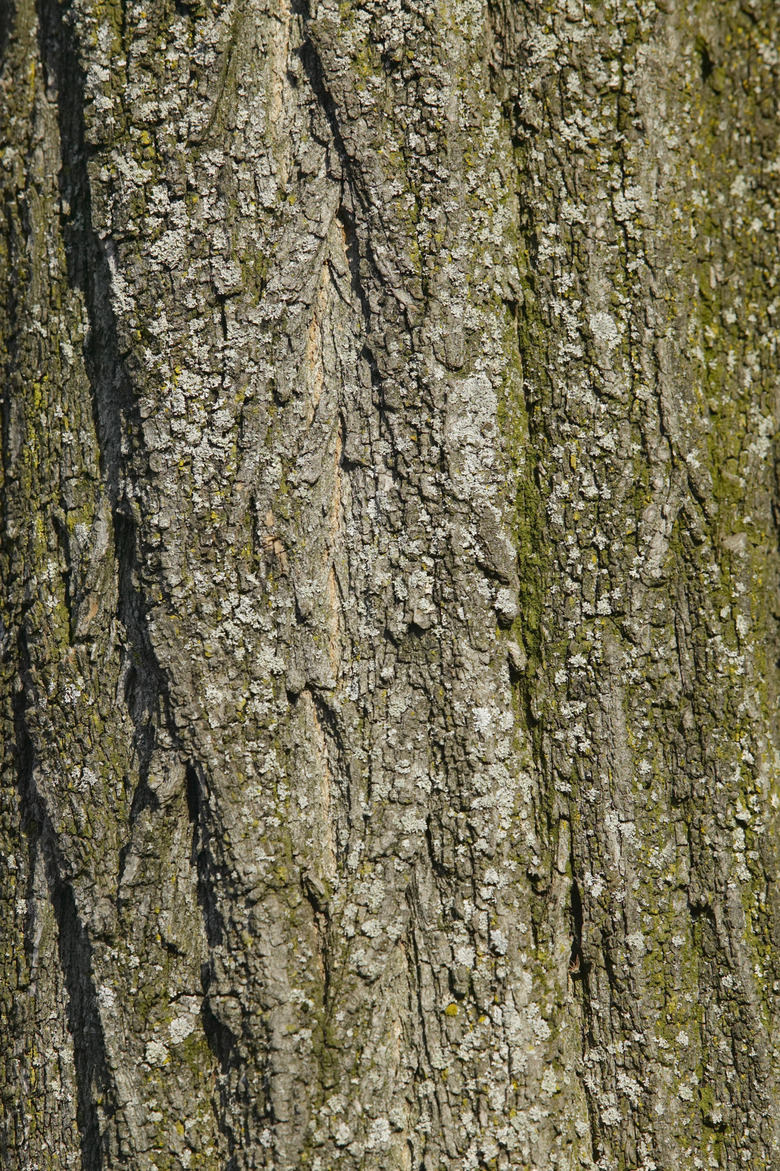Symbiotic Relationships Between Trees & Lichens
Lichen species are a familiar sight in many landscape settings, even to those who don't know whether the colorful patchwork is animal, plant or even abiotic in nature. Actually, a lichen is a symbiotic relationship between two organisms: a fungi and an algae or cyanobacteria, notes University of New Hampshire Cooperative Extension. Lichens frequently grow on trees and other plants, almost always in a way that doesn't harm the host plant, according to University of Georgia Extension. Lichens can also be found growing on rocks, windows, tortoises and mailboxes, and in just about every environment on the planet.
Tree and Lichen Commensalism
Tree and Lichen Commensalism
Symbiosis in common parlance is often equated with mutualism – a mutually beneficial relationship between two organisms. Actually, mutualism is but one variety of symbiosis, which is an umbrella term encompassing many kinds of close interactions between unrelated species. In most cases, the basic kind of symbiosis existing between trees and lichens is one of commensalism, in which one organism benefits from the association and the other is neither positively nor adversely affected.
Lichens mainly use trees as structural perches. They are not extracting nutrients or water from the tree tissue itself, as they are capable of photosynthesizing on their own. Lofty trunk or branch sites can give lichens better access to sunlight for making their own food, as well as to moisture condensed on the tree through the phenomenon of fog drip.
Benefits of Lichens
Benefits of Lichens
Trees can benefit somewhat from the presence of lichens in the vicinity. Those lichens that exist as a partnership between a fungus and cyanobacteria can, by virtue of the latter's activities, fix – or make available in a form usable to other organisms – the essential nutrient of nitrogen from the air.
Rain can leach nitrogen from lichens and thus distribute it in soil, where trees and other plants can tap into it. The decomposition of lichens, as with all organic matter, also adds nutrients to the soil.
Finally, lichens can function as notable agents of biological weathering: by expanding and contracting with moisture absorption and drying and to a lesser extent by actively extracting nutrients, lichen can pry apart cracks and crevices in bare rock. Such activity opens a foothold for the establishment of trees, as organic matter begins collecting in the fissure and soil begins to form. Tree roots themselves can further rend open rock.
Adverse Effects on Trees
Adverse Effects on Trees
Though the vast majority of lichen-tree relationships involve no harm to the tree, the host can be damaged is some situations. Some tree-infesting insects lay their eggs in arboreal lichen species, thus proliferating a pest destructive to the tree. One species of North American algae that damages leafs and twigs of certain trees and shrubs partners with fungus to form a lichen.
Symbiosis of Lichens
Symbiosis of Lichens
Outside the habitat relationship they sometimes engage in with trees, lichens themselves are among the most well-known and remarkable examples of symbiosis. Lichens are actually biological collaborations between a fungus and a photosynthetic organism (called a photobiont), usually a kind of algae or cyanobacteria.
The fungus certainly benefits from the relationship, gleaning the energy produced by its partner's photosynthetic operations. The photobiont may benefit by the moisture and shelter provided by the fungus. Ultimately, though, the relationship may be more akin to a farmer (the fungus) and its crop or livestock (the photobiont) – or, as Daniel Mathews writes in "Cascade-Olympic Natural History," to a human being and its helpful intestinal microorganisms.
According to University of Wisconsin Milwaukee, only about 20% of fungus species can form lichens. But these fungi, along with their photosynthetic partners, create some of the Earth's most amazing examples of symbiosis. There are many diverse forms of lichens that can live in some of the Earth's most extreme environments.
Cite This Article
MLA
Shaw, Ethan. "Symbiotic Relationships Between Trees & Lichens" sciencing.com, https://www.sciencing.com/symbiotic-relationships-between-trees-lichens-12593213/. 30 September 2021.
APA
Shaw, Ethan. (2021, September 30). Symbiotic Relationships Between Trees & Lichens. sciencing.com. Retrieved from https://www.sciencing.com/symbiotic-relationships-between-trees-lichens-12593213/
Chicago
Shaw, Ethan. Symbiotic Relationships Between Trees & Lichens last modified March 24, 2022. https://www.sciencing.com/symbiotic-relationships-between-trees-lichens-12593213/
